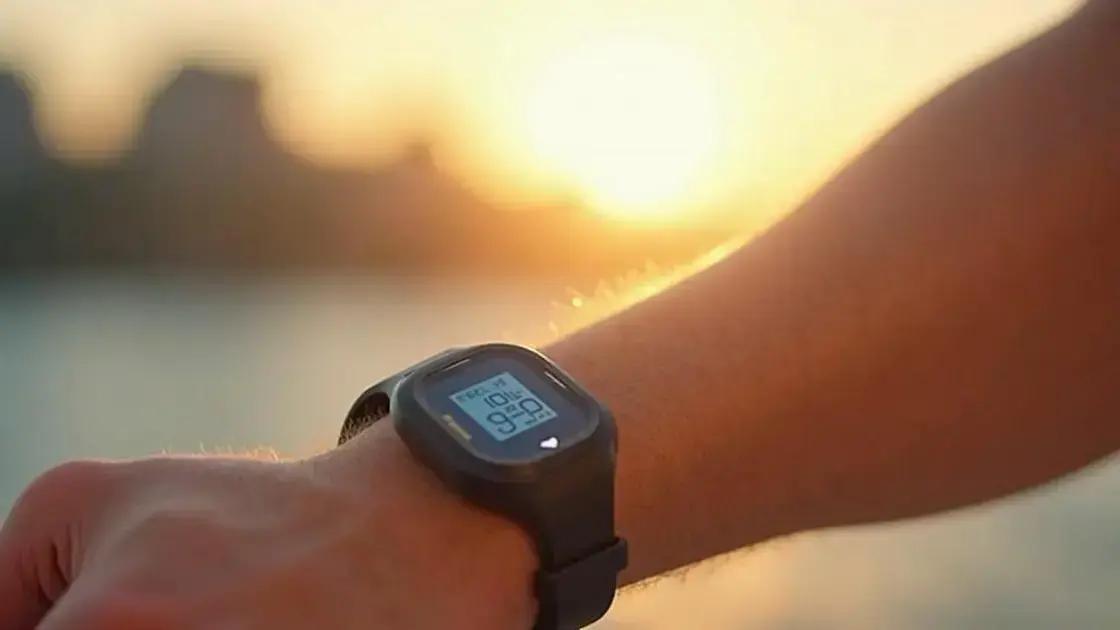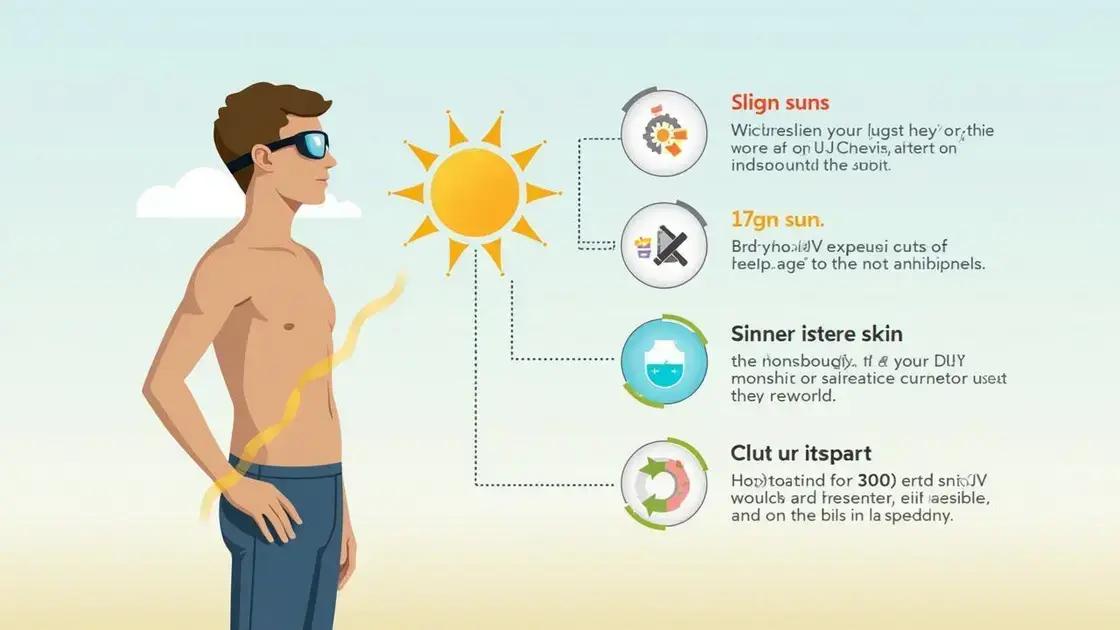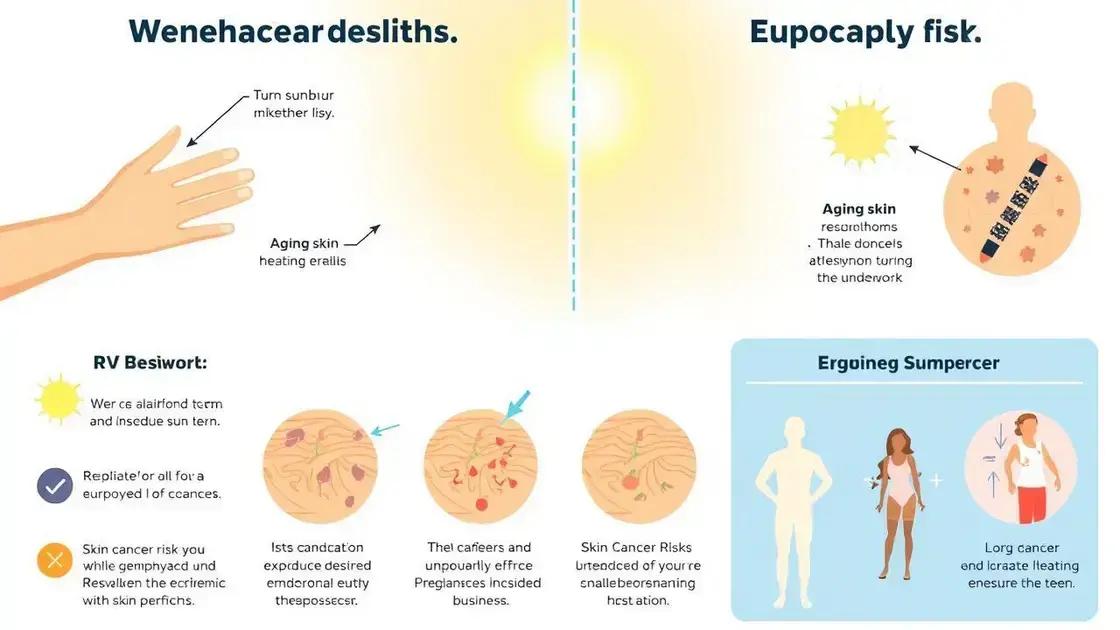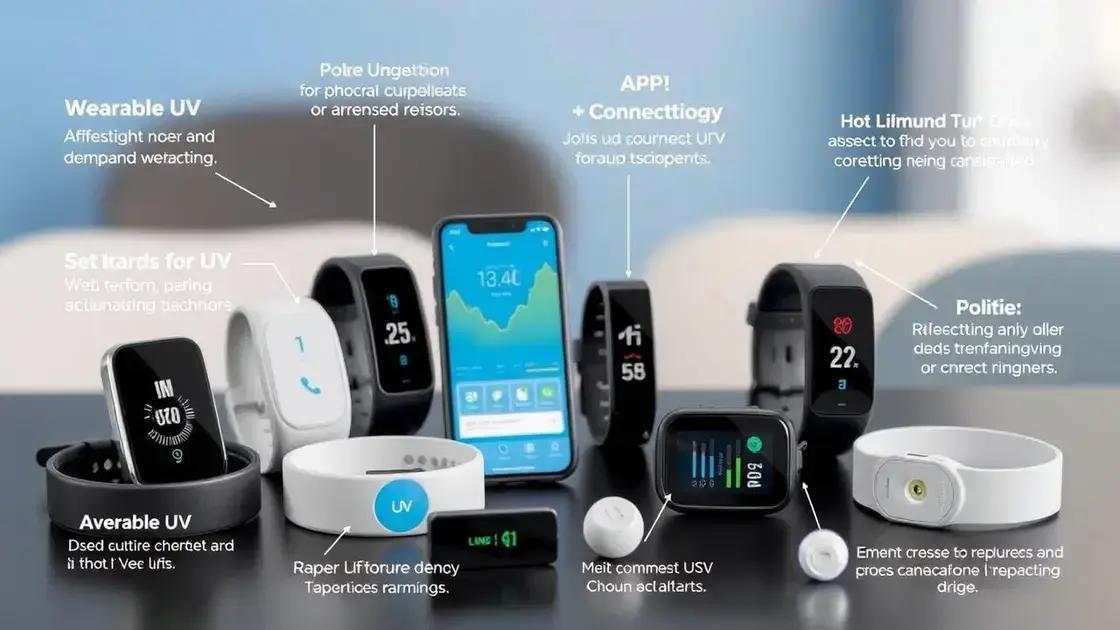Wearable UV sensors are essential devices for protecting men’s skin health by monitoring UV exposure, helping prevent sunburn, premature aging, and skin cancer. They provide real-time data, personalized alerts, and long-term tracking, enabling proactive sun safety measures.
In an era where skin health is more crucial than ever, the role of wearable UV sensors in protecting men’s skin health cannot be overlooked. These innovative devices enable men to monitor UV exposure effectively, reducing the risk of skin damage and promoting healthier skin. This article dives deep into understanding how wearable UV sensors work, their impact on men’s skin health, and how to choose the best device for your needs.
Understanding Wearable UV Sensors

Wearable UV sensors are advanced devices designed to measure ultraviolet (UV) radiation from the sun. Understanding wearable UV sensors involves knowing their purpose, functionality, and benefits for skin health. They help monitor sun exposure in real-time, providing feedback to users to manage their time in the sun effectively.
How Do Wearable UV Sensors Work?
These sensors typically use photodiodes and other light-sensitive materials to detect UV rays. Once a person is exposed to sunlight, the sensor assesses the UV intensity and records exposure levels. Most wearable UV sensors connect to a smartphone app, where the data is displayed and tracked over time.
Benefits of Using Wearable UV Sensors
Using wearable UV sensors can empower men to take proactive measures to protect their skin. By receiving alerts when UV levels are high, individuals can seek shade or apply sunscreen at appropriate times, thereby reducing the risk of skin damage and long-term consequences such as skin cancer.
Different Types of Wearable UV Sensors
There are various types of wearable UV sensors available on the market today. Some are integrated into fitness trackers or smartwatches, while others are dedicated devices specifically designed for UV monitoring. When choosing a UV sensor, consider factors such as accuracy, battery life, and compatibility with your smartphone.
Ultimately, understanding wearable UV sensors can enhance your knowledge about sun safety and contribute to better skin health for men.
How UV Sensors Protect Men’s Skin

How UV sensors protect men’s skin is essential for maintaining healthy skin. The sun emits harmful UV rays that can cause skin damage and increase the risk of skin cancer. By using wearable UV sensors, men can actively monitor their exposure levels and take preventative measures.
Real-Time Monitoring
Wearable UV sensors provide real-time data on UV radiation. This immediate feedback allows users to make informed decisions about sun exposure. For instance, if the sensor detects high UV levels, it can alert the wearer to seek shade or apply sunscreen.
Personalized Recommendations
Many UV sensors come with accompanying apps that offer personalized advice based on individual skin type and past sun exposure. This tailored guidance helps men understand their skin’s unique needs and enhances protective measures against UV damage.
Long-Term Skin Health
By consistently monitoring UV exposure with a wearable sensor, men can reduce their risk of developing long-term skin issues. Regular alerts encourage protective behaviors and promote awareness of skin health, fostering a proactive approach to sun safety.
Incorporating UV sensors into daily routines significantly contributes to skin protection, making them valuable tools for maintaining men’s skin health.
The Impact of UV Exposure on Skin Health

The impact of UV exposure on skin health is significant, especially for men who may not be as aware of the risks. UV radiation from the sun can lead to both immediate and long-term skin damage. Understanding these effects helps in taking preventive actions.
Immediate Effects of UV Exposure
Short-term exposure to UV rays can cause sunburn, which manifests as redness, pain, and skin peeling. This kind of damage occurs when the skin’s protective mechanisms are overwhelmed by excessive UV radiation.
Long-Term Skin Health Risks
Prolonged UV exposure increases the risk of serious skin conditions, such as premature aging and skin cancer. Premature aging refers to the development of wrinkles, age spots, and loss of skin elasticity. By continuously exposing the skin to UV radiation, men may face these effects earlier than expected.
Skin Cancer Risk
The most concerning impact of UV exposure is its link to skin cancer. The two most common types are basal cell carcinoma and melanoma. Men are particularly at risk for melanoma, which can be more deadly if not detected early. Regular skin checks and awareness of UV exposure are vital for prevention.
Using wearable UV sensors can help monitor sun exposure, guiding men to take action before the UV levels become harmful. Being proactive about protecting skin health is essential for long-term well-being.
Choosing the Right Wearable UV Sensor

Choosing the right wearable UV sensor is crucial to effectively monitor UV exposure and protect skin health. With many options available, here are some important factors to consider.
Accuracy and Reliability
When selecting a UV sensor, check for its accuracy in measuring UV levels. Reliable data is essential for making informed decisions about sun safety. Look for sensors tested by independent organizations to ensure quality.
Compatibility and Connectivity
Ensure that the wearable UV sensor is compatible with your smartphone or other devices. Many sensors sync with apps that provide additional functions, such as tracking cumulative UV exposure over time. Choose a device that easily integrates with your existing technology.
Battery Life and Durability
Look for UV sensors with a long battery life. Frequent charging can be inconvenient when you’re on the go. Additionally, opt for a durable design that can withstand daily wear, exposure to sweat, and different weather conditions.
Features and Alerts
Consider the features that come with the UV sensor. Some devices offer customizable alerts that notify you when UV levels are high. Others might include options to log sun exposure or suggest sunscreen application times based on current UV readings.
Ultimately, taking the time to choose the right wearable UV sensor can significantly enhance your ability to protect your skin from harmful UV radiation.
In Summary: Protecting Men’s Skin Health with UV Sensors
Wearable UV sensors play a vital role in safeguarding men’s skin health by providing real-time data on UV exposure. Understanding how these devices work, the risks of UV exposure, and the importance of choosing the right sensor empowers men to take proactive measures.
By effectively monitoring UV levels, men can reduce the risk of skin damage, premature aging, and skin cancer. The integration of wearable technology into daily routines supports informed decisions about sun safety.
Ultimately, embracing the use of wearable UV sensors is essential for maintaining healthy skin and enjoying outdoor activities responsibly.
FAQ – Frequently Asked Questions about Wearable UV Sensors
What are wearable UV sensors?
Wearable UV sensors are devices that monitor ultraviolet (UV) radiation exposure from the sun, helping users protect their skin health.
How do wearable UV sensors work?
These sensors measure UV radiation using photodiodes and other light-sensitive materials, providing real-time feedback on UV exposure levels.
Why is monitoring UV exposure important?
Monitoring UV exposure is crucial to preventing skin damage, premature aging, and reducing the risk of skin cancer.
What features should I look for in a wearable UV sensor?
Key features include accuracy, compatibility with smartphones, battery life, durability, and customizable alerts for UV levels.
Can I track my sun exposure over time with a UV sensor?
Yes, many wearable UV sensors come with apps that allow you to log and track your sun exposure over time for better skin health management.
Are wearable UV sensors suitable for all skin types?
Yes, wearable UV sensors are beneficial for all skin types, as they help everyone monitor UV exposure and take precautions.












